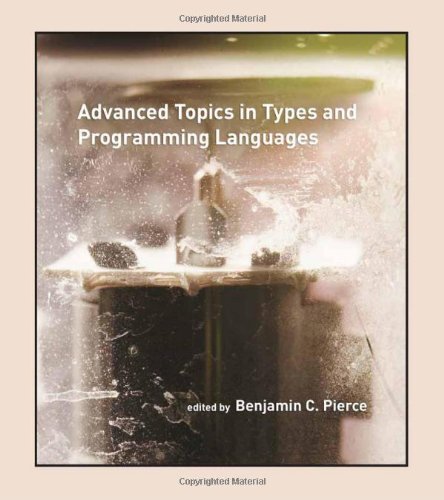Types and Programming Languages ebook download
Par franklin mollie le lundi, juillet 11 2016, 11:50 - Lien permanent
Types and Programming Languages by Benjamin C. Pierce


Download eBook
Types and Programming Languages Benjamin C. Pierce ebook
Publisher: MIT
Page: 645
Format: pdf
ISBN: 0262162091, 9780262162098
There is widespread confusion or disagreement about the meanings of the words static, dynamic, strong and weak when used to describe the type systems of programming languages. A while back he asked me to write about various different programming languages and their differences. And software presents an opportunity to help . You must be logged in to post a comment. Why don't we have data types that are 4 bits in size? We will be looking into the purpose of a programming language, what happens under the hood and basic data types. �how to interpret performance benchmarks?”, et ad nauseam. I have seen bit-fields, but I have heard they are not portable, and perhaps not used as well? (mirror) We are rapidly approaching that many viable choices for programming with dependent types. See the SICSA Summer School on Types and Programming Languages web site for further details. Categories: Event, Summer School Tags: Comments (0). Or rather, I would deconstruct these applications into libraries and grant users access to the functions and data types of these libraries within a grand unified programming environment. Got says: February 28, 2011 at 1:51 am. This will give you a basic understanding on what is basic for all programming languages. Why can't we make them if we are so inclined? But that doesn't even matter – programming languages (even C) specify that their int type be binary or at least behave as such – so x&1 will ALWAYS work. The Haskell project was begun in order to unify "more than a dozen non-strict, purely functional programming languages". Programming languages and type systems are two fascinating subjects inside computer science, and there are plenty of sites devoted to them. I even took a few cheap-o “what programming language are you?” type quizzes (I, in fact, created this “cheap-o” quiz). In this model, interaction with the computer is fundamentally an act of creation, the creative act of programming, of assembling language to express ideas, access information, and automate tasks.